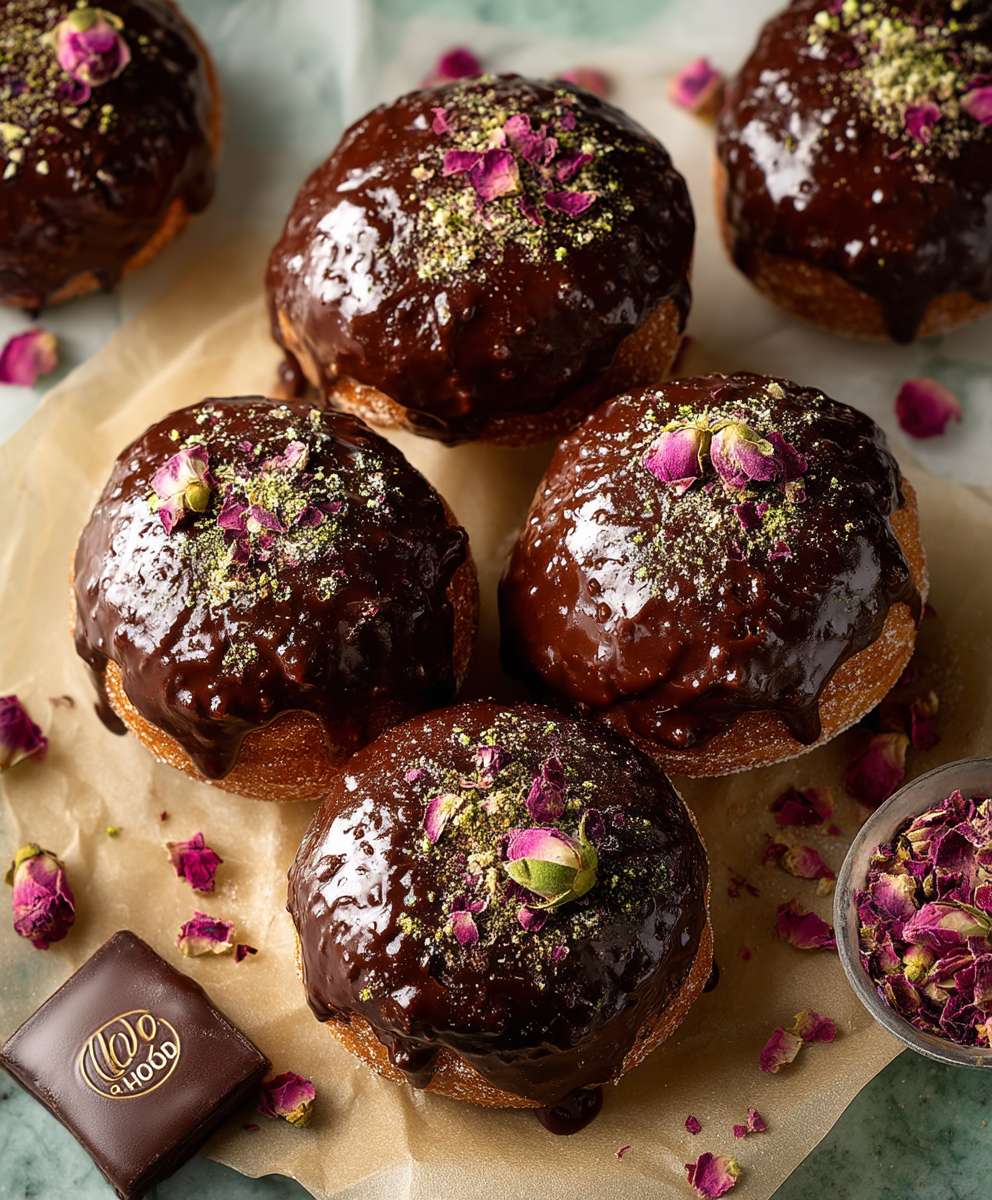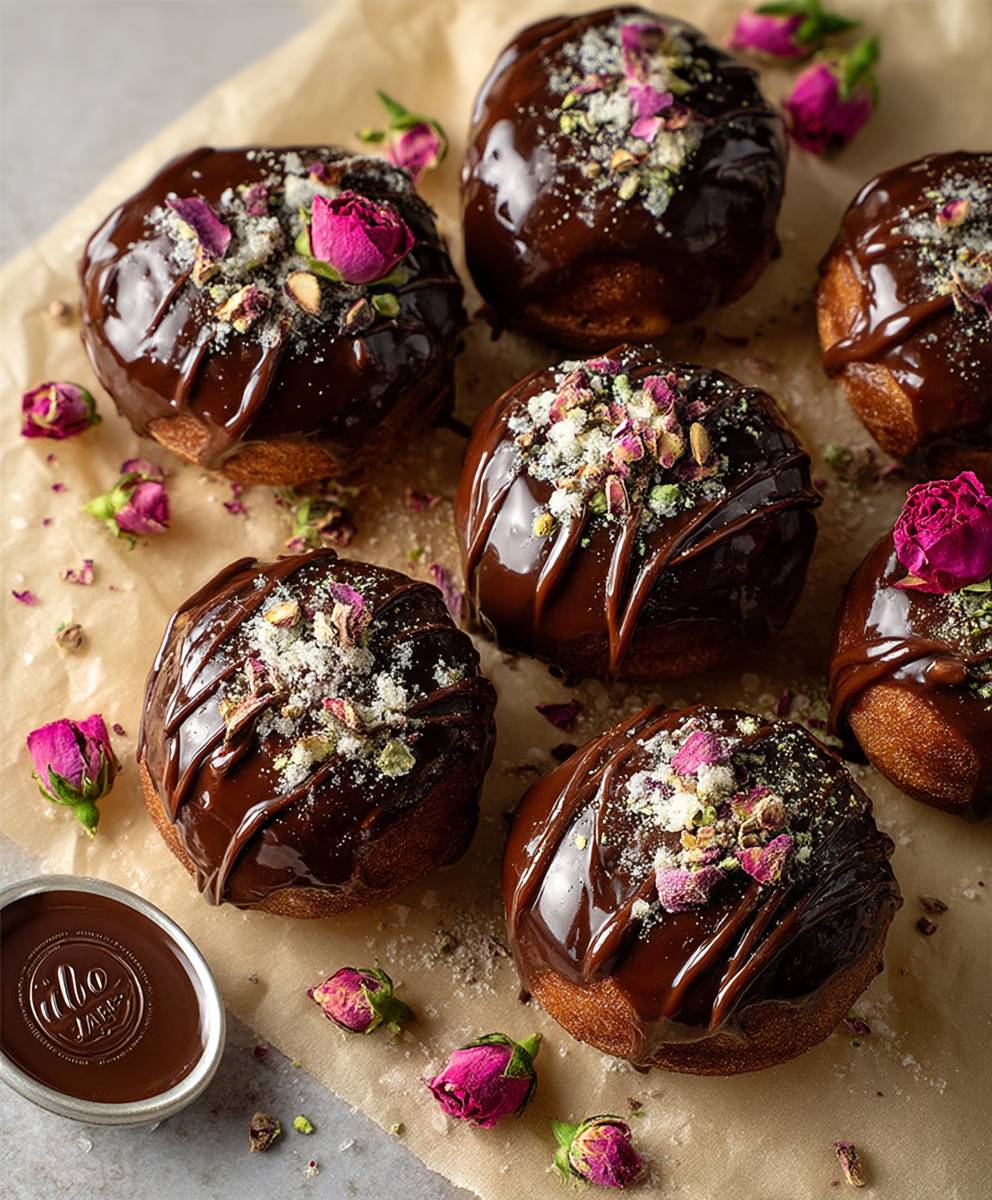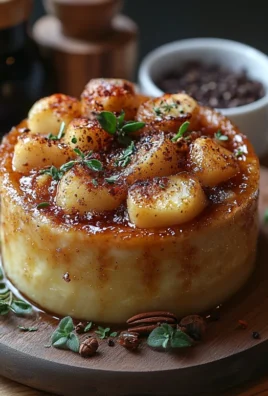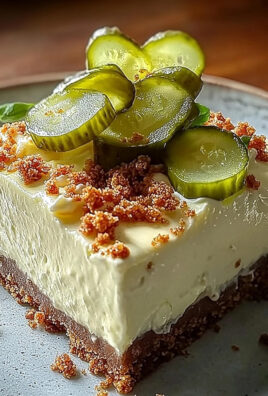Cardamom Rose Brioche Doughnuts: Prepare to be transported to a realm of pure pastry perfection! Imagine sinking your teeth into a cloud-like doughnut, its delicate crumb infused with the warm, aromatic spice of cardamom and the subtle, floral fragrance of rose. These aren’t your average doughnuts; they’re a decadent treat that elevates the humble doughnut to an art form.
The inspiration for these delightful doughnuts draws from the rich culinary traditions of the Middle East and Europe, where cardamom and rosewater are cherished ingredients in desserts. Cardamom, often called the “Queen of Spices,” has been used for centuries in sweet and savory dishes, adding a unique depth of flavor. Rosewater, with its delicate perfume, has long been associated with celebrations and special occasions. Combining these flavors with the buttery richness of brioche dough creates a truly unforgettable experience.
What makes these Cardamom Rose Brioche Doughnuts so irresistible? It’s the perfect balance of textures and flavors. The brioche dough, enriched with butter and eggs, creates a soft, airy interior that practically melts in your mouth. The cardamom adds a warm, slightly spicy note that complements the sweet, floral rose. Whether you enjoy them warm with a cup of coffee or as a special dessert, these doughnuts are guaranteed to bring a smile to your face. They’re also surprisingly easy to make at home, allowing you to impress your friends and family with your baking skills. So, let’s get started and create these little bites of heaven!
Ingredients:
- For the Brioche Dough:
- 500g strong bread flour, plus extra for dusting
- 10g instant dried yeast
- 60g granulated sugar
- 1 tsp salt
- 120ml whole milk, lukewarm
- 4 large eggs, lightly beaten
- 150g unsalted butter, softened and cut into cubes
- 1 tsp cardamom powder
- 1 tsp rose water
- For the Rose Glaze:
- 250g icing sugar, sifted
- 3-4 tbsp milk
- 1 tbsp rose water
- Pink food coloring (optional)
- Dried rose petals, for garnish (optional)
- For Frying:
- Vegetable oil, for frying (about 2-3 liters)
Preparing the Brioche Dough
- Combine Dry Ingredients: In the bowl of a stand mixer fitted with a dough hook, combine the flour, yeast, sugar, salt, and cardamom powder. Give it a quick mix on low speed to ensure everything is evenly distributed. This helps the yeast activate properly and prevents pockets of salt or sugar.
- Add Wet Ingredients: Gradually add the lukewarm milk and beaten eggs to the dry ingredients. Mix on low speed until a shaggy dough forms. Don’t worry if it looks a little rough at this stage; it will come together as you knead it.
- Incorporate the Butter: With the mixer still running on low, add the softened butter, one cube at a time, allowing each cube to be fully incorporated into the dough before adding the next. This is crucial for creating that rich, tender brioche texture. Be patient; it might take a few minutes.
- Knead the Dough: Once all the butter is incorporated, increase the mixer speed to medium and knead the dough for 8-10 minutes, or until it becomes smooth, elastic, and pulls away from the sides of the bowl. The dough should be slightly sticky but not overly wet. If it’s too sticky, add a tablespoon of flour at a time until it reaches the right consistency.
- Add Rose Water: Gently mix in the rose water until evenly distributed. Be careful not to overmix at this stage.
- First Rise (Bulk Fermentation): Place the dough in a lightly oiled bowl, turning to coat. Cover the bowl with plastic wrap or a damp cloth. Let it rise in a warm place for 1.5-2 hours, or until doubled in size. This first rise is essential for developing the flavor and texture of the brioche.
- Punch Down and Chill: Gently punch down the dough to release the air. Cover the bowl again with plastic wrap and refrigerate for at least 4 hours, or preferably overnight. This chilling period slows down the yeast activity and allows the flavors to develop further, making the doughnuts even more delicious. It also makes the dough easier to handle.
Shaping and Second Rise
- Prepare Your Workspace: Line a baking sheet with parchment paper. Lightly flour your work surface to prevent the dough from sticking.
- Roll Out the Dough: Turn the chilled dough out onto the floured surface. Gently roll it out to a thickness of about 1/2 inch (1.25 cm). Try to keep the dough as even as possible for uniform doughnuts.
- Cut Out Doughnuts: Use a doughnut cutter (or two different sized round cutters) to cut out the doughnuts. Place the cut doughnuts onto the prepared baking sheet, leaving some space between them.
- Cut Out Doughnut Holes: If you are using two different sized round cutters, use the smaller cutter to cut out the doughnut holes from the center of each doughnut. Place the doughnut holes onto the prepared baking sheet, leaving some space between them.
- Second Rise (Proofing): Cover the doughnuts loosely with plastic wrap or a damp cloth. Let them rise in a warm place for 30-45 minutes, or until they are puffy and almost doubled in size. This second rise is crucial for creating light and airy doughnuts.
Frying the Doughnuts
- Prepare for Frying: While the doughnuts are proofing, heat the vegetable oil in a large, heavy-bottomed pot or deep fryer to 350°F (175°C). Use a thermometer to monitor the oil temperature; it’s important to maintain a consistent temperature for even cooking.
- Fry the Doughnuts: Carefully place a few doughnuts at a time into the hot oil, being careful not to overcrowd the pot. Overcrowding will lower the oil temperature and result in greasy doughnuts.
- Cook Until Golden Brown: Fry the doughnuts for 2-3 minutes per side, or until they are golden brown and cooked through. Use a slotted spoon or spider to carefully flip them over.
- Drain Excess Oil: Remove the fried doughnuts from the oil and place them on a wire rack lined with paper towels to drain excess oil. This helps prevent them from becoming soggy.
- Fry the Doughnut Holes: Repeat the frying process with the doughnut holes, frying them for 1-2 minutes per side, or until golden brown.
Preparing the Rose Glaze
- Combine Glaze Ingredients: In a medium bowl, whisk together the sifted icing sugar, milk, and rose water until smooth and creamy. Add more milk, one teaspoon at a time, if needed to reach your desired consistency. The glaze should be thick enough to coat the doughnuts but thin enough to drip slightly.
- Add Pink Food Coloring (Optional): If desired, add a drop or two of pink food coloring to the glaze and stir until evenly colored.
Glazing and Garnishing
- Glaze the Doughnuts: Dip each warm doughnut into the rose glaze, coating it evenly. Place the glazed doughnuts back on the wire rack to allow the excess glaze to drip off.
- Glaze the Doughnut Holes: Dip each warm doughnut hole into the rose glaze, coating it evenly. Place the glazed doughnut holes back on the wire rack to allow the excess glaze to drip off.
- Garnish with Rose Petals (Optional): While the glaze is still wet, sprinkle the doughnuts with dried rose petals for a beautiful and fragrant garnish.
- Let the Glaze Set: Allow the glaze to set completely before serving, about 15-20 minutes. This will prevent the glaze from being sticky.
Tips for Success
- Use High-Quality Ingredients: The quality of your ingredients will directly impact the flavor of your doughnuts. Use good quality bread flour, fresh eggs, and real butter for the best results.
- Don’t Overcrowd the Pot: When frying, avoid overcrowding the pot. This will lower the oil temperature and result in greasy doughnuts. Fry in batches to maintain a consistent temperature.
- Monitor the Oil Temperature: Use a thermometer to monitor the oil temperature and adjust the heat as needed to maintain a consistent temperature of 350°F (175°C).
- Let the Doughnuts Cool Slightly Before Glazing: Glazing the doughnuts while they are still warm will help the glaze adhere better. However, avoid glazing them while they are too hot, as this can cause the glaze to melt and run off.
- Be Patient: Making brioche doughnuts takes time and patience. Don’t rush the process, especially the rising and chilling stages. These steps are crucial for developing the flavor and texture of the doughnuts.
- Experiment with Flavors: Feel free to experiment with different flavors and toppings. You can add other spices to the dough, such as cinnamon or nutmeg, or try different glazes, such as chocolate or vanilla.

Conclusion:
And there you have it! These Cardamom Rose Brioche Doughnuts are more than just a sweet treat; they’re an experience. From the intoxicating aroma that fills your kitchen as they bake to the delicate, melt-in-your-mouth texture, every bite is a little piece of heaven. I truly believe this recipe is a must-try for any baking enthusiast, or anyone who simply appreciates a truly exceptional doughnut. The subtle floral notes of rosewater perfectly complement the warm, spicy cardamom, creating a flavor profile that’s both sophisticated and comforting.
Why is this recipe a must-try? Because it elevates the humble doughnut to something truly special. It’s not your average, run-of-the-mill fried dough. The brioche dough itself is rich and buttery, providing a luxurious base for the fragrant glaze. The combination of cardamom and rose is unexpected and delightful, making these doughnuts a guaranteed conversation starter. Plus, the satisfaction of creating something so beautiful and delicious from scratch is simply unparalleled.
But the fun doesn’t stop there! Feel free to get creative with your serving suggestions and variations. For a truly decadent experience, serve these doughnuts warm with a scoop of vanilla bean ice cream. The contrast between the warm doughnut and the cold ice cream is simply divine. Or, if you’re feeling adventurous, try dipping them in melted white chocolate and sprinkling them with dried rose petals for an extra touch of elegance.
Serving Suggestions and Variations:
* Breakfast in Bed: Surprise a loved one with these doughnuts and a cup of coffee for a truly special breakfast.
* Dessert with a Twist: Serve them as a sophisticated dessert at your next dinner party.
* Rosewater Alternatives: If you’re not a fan of rosewater, you can substitute it with orange blossom water or even a touch of vanilla extract.
* Spice it Up: Add a pinch of nutmeg or ginger to the dough for an extra layer of warmth.
* Glaze Variations: Experiment with different glazes! A lemon glaze would provide a bright, citrusy contrast to the cardamom and rose. Or, try a simple powdered sugar glaze for a more classic look.
* Filling Options: While these doughnuts are delicious on their own, you could also fill them with pastry cream, jam, or even a chocolate ganache.
I’ve poured my heart and soul into perfecting this recipe, and I’m confident that you’ll love it as much as I do. The process of making these Cardamom Rose Brioche Doughnuts is therapeutic, and the end result is incredibly rewarding. Don’t be intimidated by the brioche dough; it’s easier than you think! Just follow the instructions carefully, and you’ll be rewarded with the most amazing doughnuts you’ve ever tasted.
So, what are you waiting for? Gather your ingredients, preheat your oven (or prepare your frying oil), and get ready to embark on a baking adventure. I can’t wait to hear about your experience! Please, please, please try this recipe and let me know how it turns out. Share your photos and stories with me on social media using [Your Hashtag Here]. I’m eager to see your beautiful creations and hear about your variations. Happy baking, and enjoy every delicious bite of these unforgettable Cardamom Rose Brioche Doughnuts! I am sure you will love this Cardamom Rose Brioche Doughnuts recipe.
Cardamom Rose Brioche Doughnuts: A Delicious Recipe & Baking Guide
Light, airy rose and cardamom infused brioche doughnuts, fried golden and glazed with a delicate rose glaze.
Ingredients
- 500g strong bread flour, plus extra for dusting
- 10g instant dried yeast
- 60g granulated sugar
- 1 tsp salt
- 120ml whole milk, lukewarm
- 4 large eggs, lightly beaten
- 150g unsalted butter, softened and cut into cubes
- 1 tsp cardamom powder
- 1 tsp rose water
- 250g icing sugar, sifted
- 3-4 tbsp milk
- 1 tbsp rose water
- Pink food coloring (optional)
- Dried rose petals, for garnish (optional)
- Vegetable oil, for frying (about 2-3 liters)
Instructions
- Combine Dry Ingredients: In the bowl of a stand mixer fitted with a dough hook, combine the flour, yeast, sugar, salt, and cardamom powder. Mix on low speed.
- Add Wet Ingredients: Gradually add the lukewarm milk and beaten eggs to the dry ingredients. Mix on low speed until a shaggy dough forms.
- Incorporate the Butter: With the mixer still running on low, add the softened butter, one cube at a time, allowing each cube to be fully incorporated into the dough before adding the next.
- Knead the Dough: Once all the butter is incorporated, increase the mixer speed to medium and knead the dough for 8-10 minutes, or until it becomes smooth, elastic, and pulls away from the sides of the bowl.
- Add Rose Water: Gently mix in the rose water until evenly distributed.
- First Rise (Bulk Fermentation): Place the dough in a lightly oiled bowl, turning to coat. Cover the bowl with plastic wrap or a damp cloth. Let it rise in a warm place for 1.5-2 hours, or until doubled in size.
- Punch Down and Chill: Gently punch down the dough to release the air. Cover the bowl again with plastic wrap and refrigerate for at least 4 hours, or preferably overnight.
- Prepare Your Workspace: Line a baking sheet with parchment paper. Lightly flour your work surface.
- Roll Out the Dough: Turn the chilled dough out onto the floured surface. Gently roll it out to a thickness of about 1/2 inch (1.25 cm).
- Cut Out Doughnuts: Use a doughnut cutter (or two different sized round cutters) to cut out the doughnuts. Place the cut doughnuts onto the prepared baking sheet, leaving some space between them.
- Cut Out Doughnut Holes: If you are using two different sized round cutters, use the smaller cutter to cut out the doughnut holes from the center of each doughnut. Place the doughnut holes onto the prepared baking sheet, leaving some space between them.
- Second Rise (Proofing): Cover the doughnuts loosely with plastic wrap or a damp cloth. Let them rise in a warm place for 30-45 minutes, or until they are puffy and almost doubled in size.
- Prepare for Frying: While the doughnuts are proofing, heat the vegetable oil in a large, heavy-bottomed pot or deep fryer to 350°F (175°C).
- Fry the Doughnuts: Carefully place a few doughnuts at a time into the hot oil, being careful not to overcrowd the pot.
- Cook Until Golden Brown: Fry the doughnuts for 2-3 minutes per side, or until they are golden brown and cooked through. Use a slotted spoon or spider to carefully flip them over.
- Drain Excess Oil: Remove the fried doughnuts from the oil and place them on a wire rack lined with paper towels to drain excess oil.
- Fry the Doughnut Holes: Repeat the frying process with the doughnut holes, frying them for 1-2 minutes per side, or until golden brown.
- Combine Glaze Ingredients: In a medium bowl, whisk together the sifted icing sugar, milk, and rose water until smooth and creamy. Add more milk, one teaspoon at a time, if needed to reach your desired consistency.
- Add Pink Food Coloring (Optional): If desired, add a drop or two of pink food coloring to the glaze and stir until evenly colored.
- Glaze the Doughnuts: Dip each warm doughnut into the rose glaze, coating it evenly. Place the glazed doughnuts back on the wire rack to allow the excess glaze to drip off.
- Glaze the Doughnut Holes: Dip each warm doughnut hole into the rose glaze, coating it evenly. Place the glazed doughnut holes back on the wire rack to allow the excess glaze to drip off.
- Garnish with Rose Petals (Optional): While the glaze is still wet, sprinkle the doughnuts with dried rose petals for a beautiful and fragrant garnish.
- Let the Glaze Set: Allow the glaze to set completely before serving, about 15-20 minutes.
Notes
- Use high-quality ingredients for the best flavor.
- Don’t overcrowd the pot when frying.
- Monitor the oil temperature to maintain a consistent 350°F (175°C).
- Let the doughnuts cool slightly before glazing.
- Be patient with the rising and chilling stages.
- Experiment with different flavors and toppings.





Leave a Comment